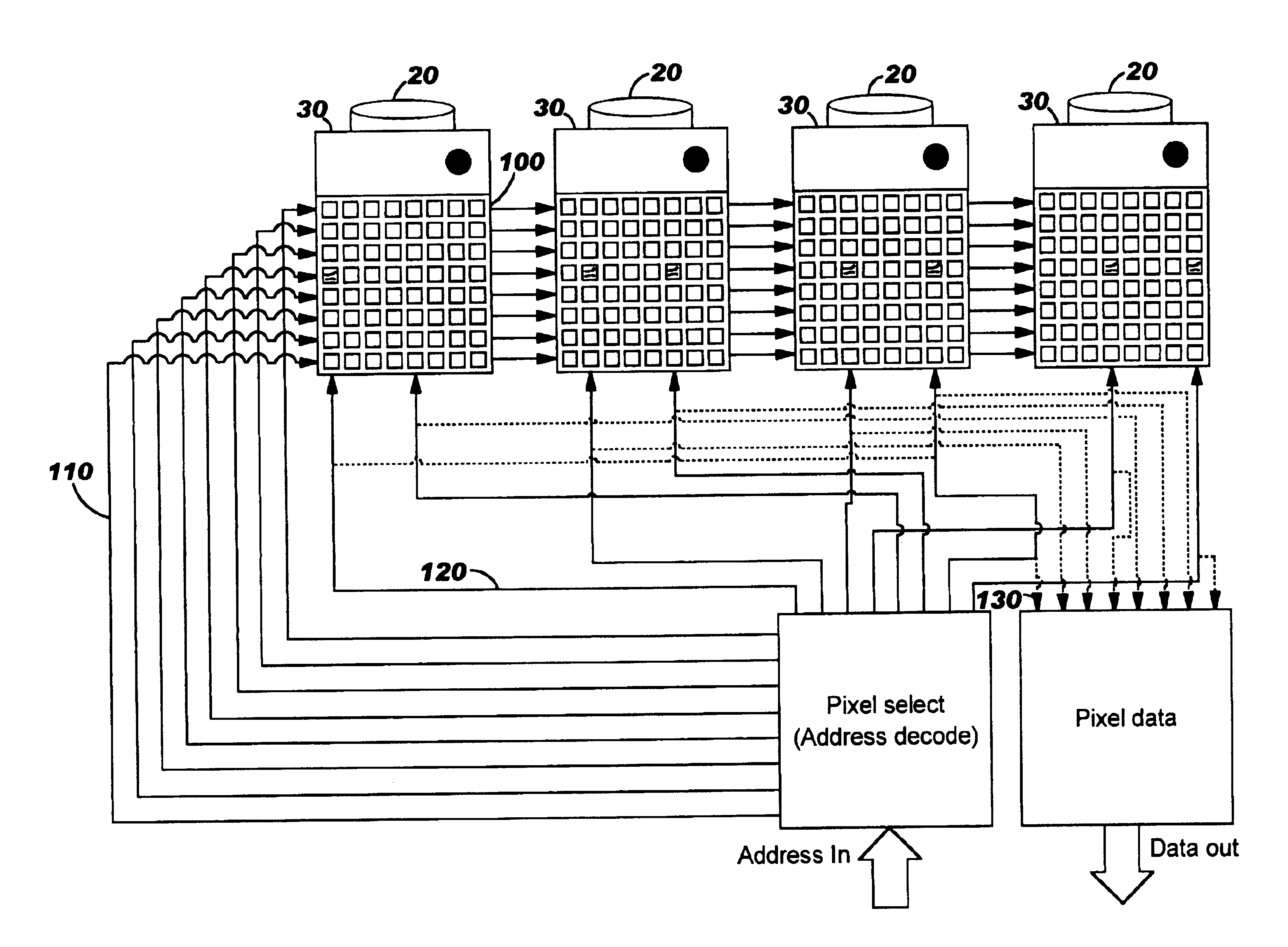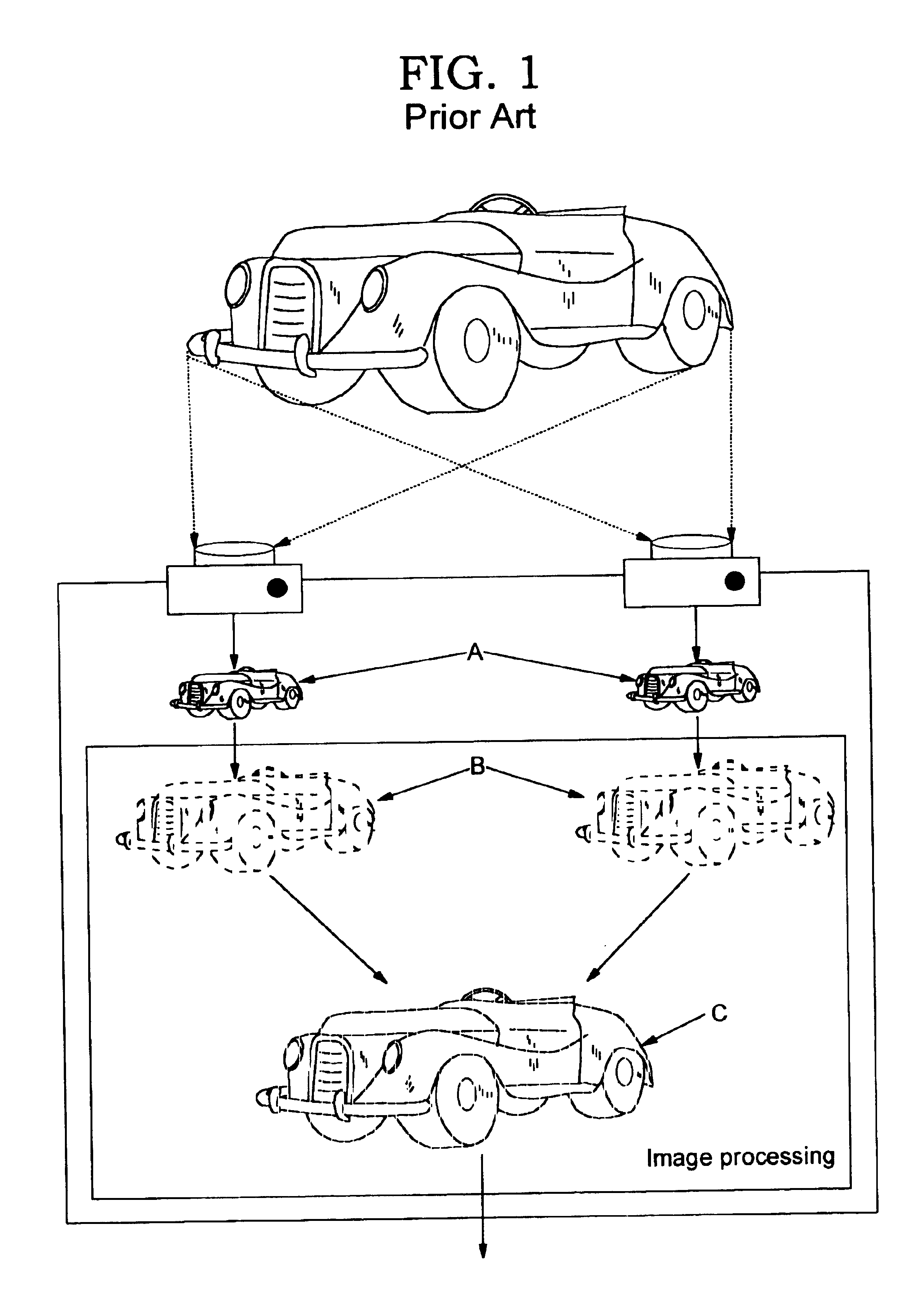Camera system for three dimensional images and video
a three-dimensional image and video technology, applied in the field of three-dimensional image and video cameras, can solve the problems of unpopularity, unsatisfactory solutions, and the requirement of wearing special glasses and their disorienting effect, and the cost of two required displays
- Summary
- Abstract
- Description
- Claims
- Application Information
AI Technical Summary
Benefits of technology
Problems solved by technology
Method used
Image
Examples
second embodiment
the present invention has an equivalent arrangement of interleaved output data connections, but uses storage arrays having greatly reduced numbers of storage cells such that the only columns of storage cells provided in the storage array are the ones to which output data lines and address lines are actually connected. If the camera system has n image capture devices, with segments of the image captured by each device being used to generate an interleaved image having P rows and Q columns of pixels, then each storage array only requires P rows and Q / n columns. The image sensor arrays can have correspondingly reduced numbers of sensor elements. This hardware reduction has the benefit of enabling use of inexpensive image capture devices, for example using a simpler mask for producing the silicon devices for CCD sensor arrays.
The above discussion about a reduction in the number of columns of a storage array and sensor array should be interpreted as including the alternative of a reduced...
PUM
 Login to View More
Login to View More Abstract
Description
Claims
Application Information
 Login to View More
Login to View More - R&D
- Intellectual Property
- Life Sciences
- Materials
- Tech Scout
- Unparalleled Data Quality
- Higher Quality Content
- 60% Fewer Hallucinations
Browse by: Latest US Patents, China's latest patents, Technical Efficacy Thesaurus, Application Domain, Technology Topic, Popular Technical Reports.
© 2025 PatSnap. All rights reserved.Legal|Privacy policy|Modern Slavery Act Transparency Statement|Sitemap|About US| Contact US: help@patsnap.com



